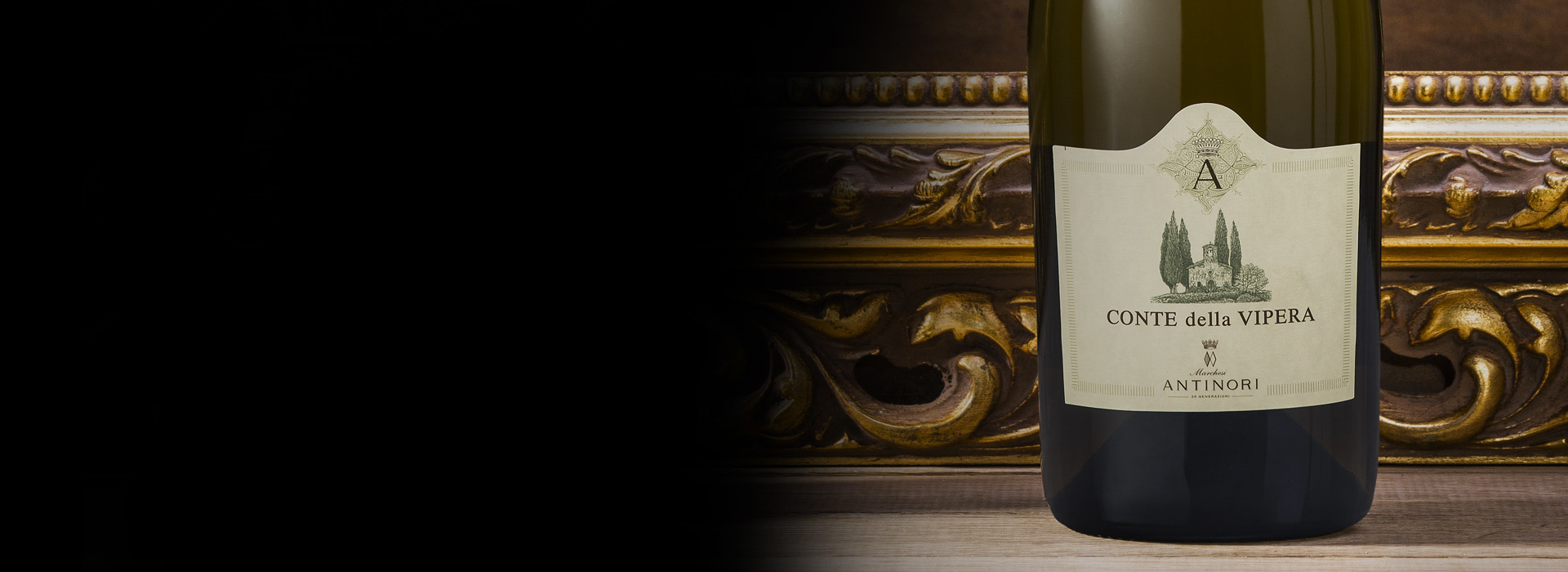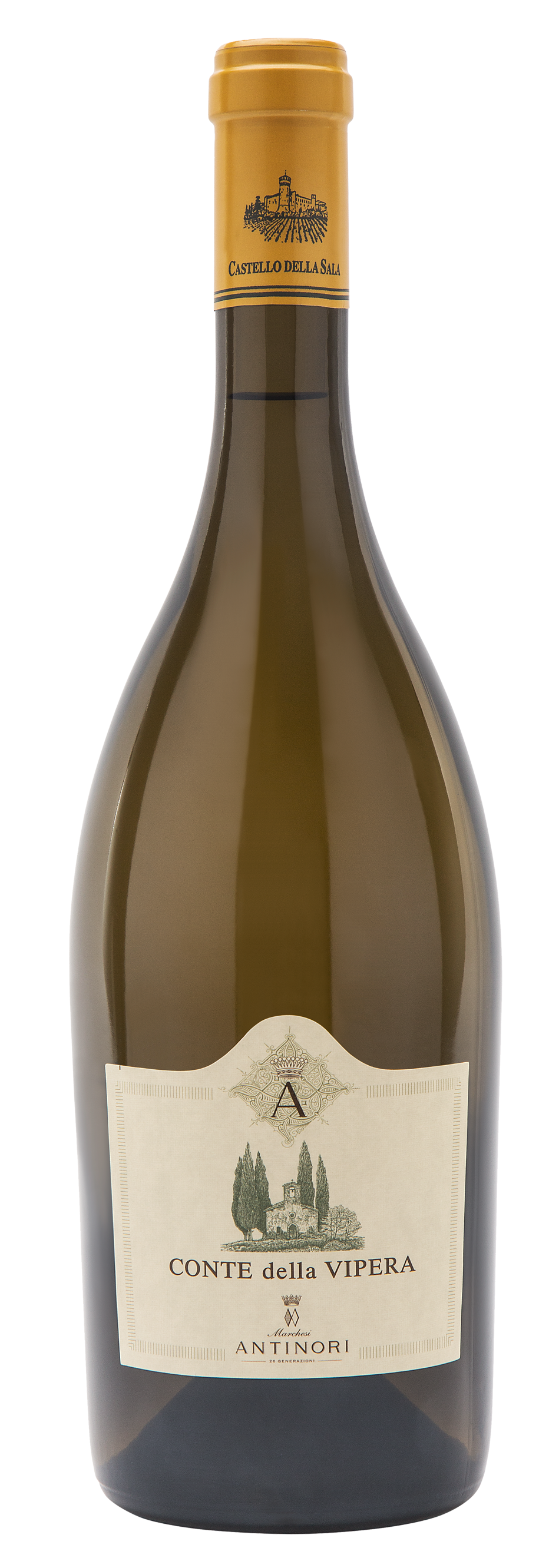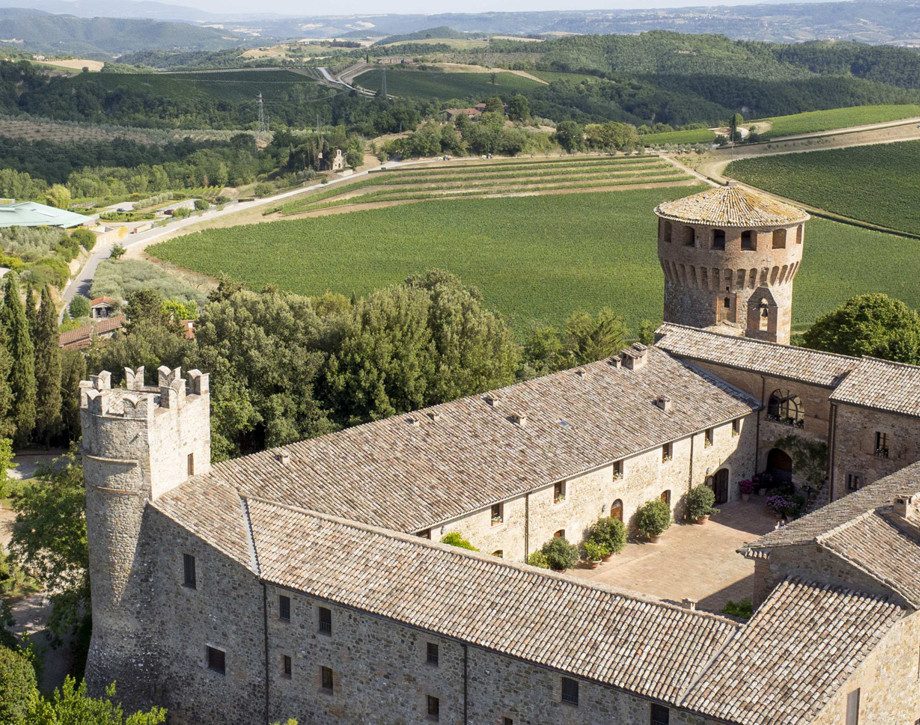Conte della Vipera

Climate
Winter weather was mild and sunny while spring saw lower than average temperatures and frequent rain showers. These climatic conditions persisted up until the end of May and affected bud break of all grape varieties, causing a delay of approximately 10 days. The month of June brought dry weather; the vines benefitted from generous groundwater reserves and maintained good vine balance even during the hot month of August, conditions that allowed complete veraison and a slow regular ripening phase. Optimal temperature swings between day and night produced grape clusters that were healthy and rich in aromatic compounds. The decision of when to pick was taken after carefully determining the right balance between sugar concentration and the fullest expression of the grape varieties’ aromatic profiles. Harvesting began with Sauvignon Blanc towards the end of August and was completed with Sémillon mid-September.
Vinification
Grape clusters were hand harvested and immediately brought to the cellar where they were cooled down on a refrigerated conveyor system lowering the temperature of the berries before pressing therefore preserving characteristic varietal aromas. Each grape variety was fermented separately. After a gentle pressing, the must was kept at a controlled temperature of 10 °C (50 °F) for several hours to facilitate natural clarification, then transferred to stainless steel tanks where alcoholic fermentation took place at a temperature that did not exceed 16 °C (61 °F). Once this phase was complete, the wine was kept at a controlled temperature of 10 °C (50 °F) to prevent malolactic fermentation and perfectly preserve organoleptic qualities. Fresh, vertical and slightly aromatic Sauvignon was blended with soft, tropical Sèmillon, one grape variety completing the other.
Historical Data
The vineyards selected to be utilized for the Conte della Vipera are located at an altitude between 825 and 1050 feet (250-350 meters) above sea level on soils rich in marine fossils. The wine takes its name from first proprietors of the Castello della Sala, and the label shows the 13th century Saint John’s Chapel (the Cappella d San Giovanni) situated on the estate. The first vintage of Conte della Vipera to be produced was the 1997.
Tasting Notes
Conte della Vipera 2019 is straw yellow with light greenish and golden hues. Its nose opens with intense notes of white flowers that blend with aromas of grapefruits, figs and ginger. On the palate it’s fresh, vibrant and savory with nuances of citron peel, aromatic herbs and elderflowers.

The Wine
The wine is produced from a careful selection of Sauvignon Blanc and Sémillon. Conte della Vipera is a tribute to the original owners of the castle and its label shows an illustration of San Giovanni’s chapel (Saint John), a small chapel located on the estate.

Climate
Winter weather was mild and sunny while spring saw lower than average temperatures and frequent rain showers. These climatic conditions persisted up until the end of May and affected bud break of all grape varieties, causing a delay of approximately 10 days. The month of June brought dry weather; the vines benefitted from generous groundwater reserves and maintained good vine balance even during the hot month of August, conditions that allowed complete veraison and a slow regular ripening phase. Optimal temperature swings between day and night produced grape clusters that were healthy and rich in aromatic compounds. The decision of when to pick was taken after carefully determining the right balance between sugar concentration and the fullest expression of the grape varieties’ aromatic profiles. Harvesting began with Sauvignon Blanc towards the end of August and was completed with Sémillon mid-September.
Vinification
Grape clusters were hand harvested and immediately brought to the cellar where they were cooled down on a refrigerated conveyor system lowering the temperature of the berries before pressing therefore preserving characteristic varietal aromas. Each grape variety was fermented separately. After a gentle pressing, the must was kept at a controlled temperature of 10 °C (50 °F) for several hours to facilitate natural clarification, then transferred to stainless steel tanks where alcoholic fermentation took place at a temperature that did not exceed 16 °C (61 °F). Once this phase was complete, the wine was kept at a controlled temperature of 10 °C (50 °F) to prevent malolactic fermentation and perfectly preserve organoleptic qualities. Fresh, vertical and slightly aromatic Sauvignon was blended with soft, tropical Sèmillon, one grape variety completing the other.
Historical Data
The vineyards selected to be utilized for the Conte della Vipera are located at an altitude between 825 and 1050 feet (250-350 meters) above sea level on soils rich in marine fossils. The wine takes its name from first proprietors of the Castello della Sala, and the label shows the 13th century Saint John’s Chapel (the Cappella d San Giovanni) situated on the estate. The first vintage of Conte della Vipera to be produced was the 1997.
Tasting Notes
Conte della Vipera 2019 is straw yellow with light greenish and golden hues. Its nose opens with intense notes of white flowers that blend with aromas of grapefruits, figs and ginger. On the palate it’s fresh, vibrant and savory with nuances of citron peel, aromatic herbs and elderflowers.

Castello della Sala
Castello della Sala is located in the Umbria region, not far from the Tuscan border, about 18 kilometers from the historic city of Orvieto. The Medieval castle’s property extends over an area of 600 hectares (1482 acres), 200 hectares (495 acres) are planted with vineyards at an altitude that varies between 220 and 470 meters above sea level (722/1541 feet) on the gently rolling hillsides that characterize the beautiful countryside in this area. Castello della Sala is the perfect place for growing white varieties. The vines grow in clay and calcareous based soils, rich in fossil shells, and they are well exposed to the rising of the sun with an excellent difference of temperature between day and night. The one exception to the rule is Pinot Noir, the only red variety that has found in this area ideal growing conditions to best express its full potential.

Soil
Soils rich in sedimentary deposits of marine fossils with veins of clay.
















